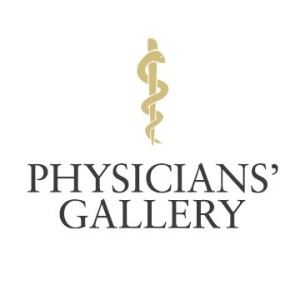
Ep.72 - Watercolour, woodcut and wax Medical illustration around 1900
 2021-12-10
2021-12-10
Download
Right click and do "save link as"
Anatomy and surgery have strong extra-textual elements. The development and transmission of these crafts rely heavily on visual communication in a range of media, whether by practitioners or (other) illustrators.
Some artists are justifiably renowned (eg Jan van Rymsdyk in the 18th century), some not as famous as they deserve (eg Joseph Towne and Henry Vandyke Carter in the Victorian era), and some (like 20th-century draughtsmen Kirkpatrick Maxwell and Sydney Sewell) are almost lost to history. Each brought new approaches, but older illustrative methods have also endured, even if deployed for different ends.
The early 20th century was a key period in the history of depicting anatomy, whether surgical, morbid or comparative. Mass reproduction brought its own challenges and opportunities; pathological illustration played a surprising role in the medical history of WWI. Examining such developments aids our understanding of the relationship between clinician and artist, text and image, material and visual culture.
Speaker: Dr Sam Alberti (Keeper of Science and Technology, National Museums Scotland)
Twitter: twitter.com/RCPEHeritage
Instagram: instagram.com/physiciansgallery/
Facebook: facebook.com/PhysiciansGallery
TikTok: https://www.tiktok.com/@physiciansgallery
view more
More Episodes
Ep.15 - Ambrose Parry
 2024-10-25
2024-10-25
 2024-10-25
2024-10-25
Ep.14 - Human And Animal Health
 2024-10-11
2024-10-11
 2024-10-11
2024-10-11
Ep.13 - Marie Stopes
 2024-09-27
2024-09-27
 2024-09-27
2024-09-27
Ep.12 - A History Of Menstruation
 2024-09-13
2024-09-13
 2024-09-13
2024-09-13
Ep.11 - The Coffin
 2024-08-30
2024-08-30
 2024-08-30
2024-08-30
Ep.10 - Vital Organs
 2024-08-16
2024-08-16
 2024-08-16
2024-08-16
Ep.09 - Death Of Kings
 2024-08-02
2024-08-02
 2024-08-02
2024-08-02
Ep.08 - Historical Reflections On Burn Scars
 2024-07-19
2024-07-19
 2024-07-19
2024-07-19
Ep.07 - What Is A Good Death
 2024-07-05
2024-07-05
 2024-07-05
2024-07-05
Ep.06 - Roald Dahl's Marvellous Medicine
 2024-06-21
2024-06-21
 2024-06-21
2024-06-21
Ep.05 - From Spots To Pox
 2024-06-07
2024-06-07
 2024-06-07
2024-06-07
Ep.02 - The History Of Condoms
 2024-04-26
2024-04-26
 2024-04-26
2024-04-26
Ep.01 - An Untold History Of Tattooing
 2024-04-12
2024-04-12
 2024-04-12
2024-04-12
Trailer
 2024-04-05
2024-04-05
 2024-04-05
2024-04-05
Ep.27 - Head To Toe - Feet
 2024-03-29
2024-03-29
 2024-03-29
2024-03-29
Ep.26 - Head To Toe - Throat
 2024-03-15
2024-03-15
 2024-03-15
2024-03-15
Ep.25 - Head To Toe - Liver
 2024-03-01
2024-03-01
 2024-03-01
2024-03-01
Ep.24 - Head To Toe - Spleen
 2024-02-16
2024-02-16
 2024-02-16
2024-02-16
012345678910111213141516171819
Create your
podcast in
minutes
- Full-featured podcast site
- Unlimited storage and bandwidth
- Comprehensive podcast stats
- Distribute to Apple Podcasts, Spotify, and more
- Make money with your podcast
It is Free
- Privacy Policy
- Cookie Policy
- Terms of Use
- Consent Preferences
- Copyright © 2015-2024 Podbean.com





